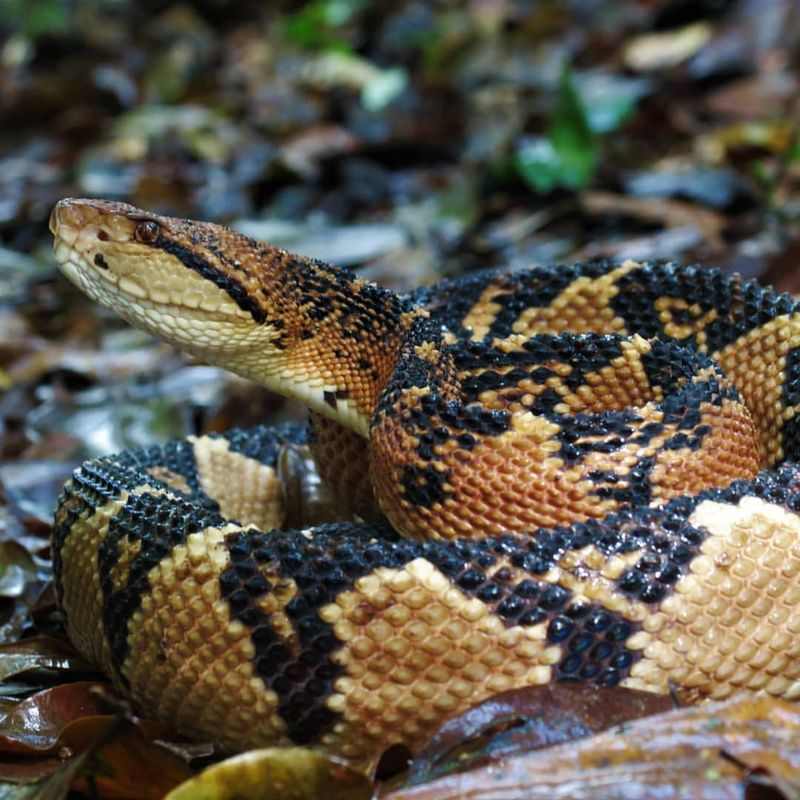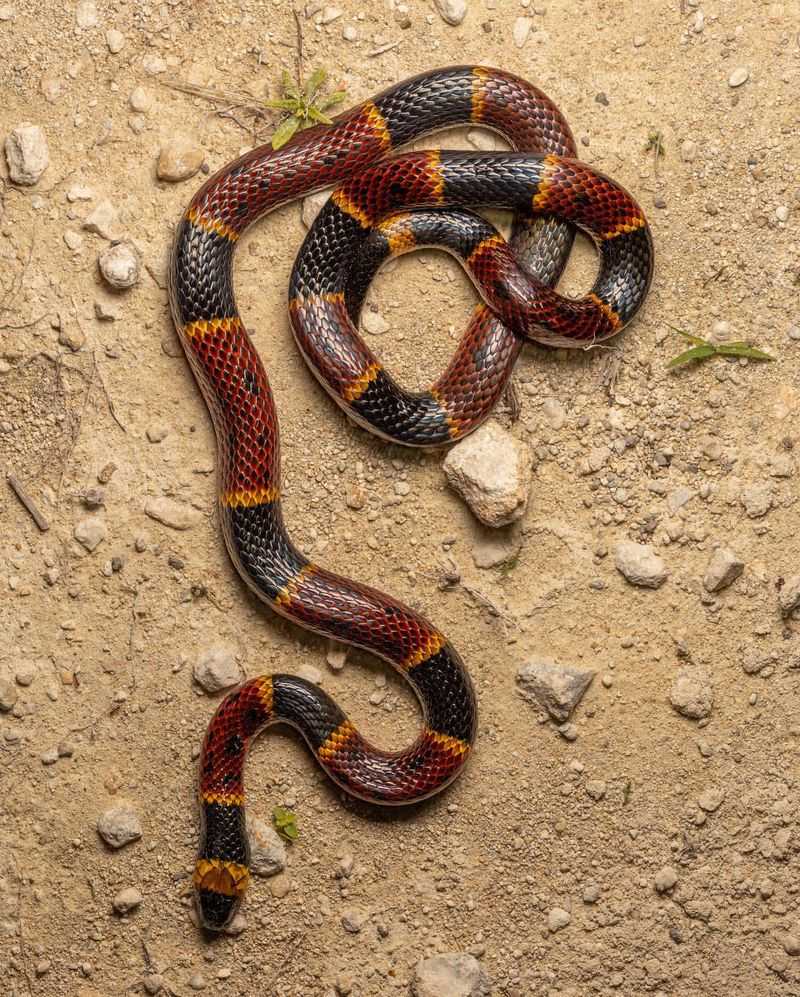📖 Table of Content:
Snakes have always captured human imagination, inspiring both awe and fear with their unique adaptations and sometimes deadly reputations. While many species are harmless, others are equipped with venom so potent that even a single bite can be life-threatening. Understanding these creatures not only helps us appreciate their role in nature but also prepares us to approach them with the respect they deserve.
Some snake species possess mild venom, causing only minor effects, while others are among the deadliest predators in the animal kingdom. Their venom is a finely tuned weapon, used for hunting and defense, making these species both fascinating and fearsome. From the relatively benign to the incredibly lethal, each snake on this list has a unique claim to its place in the hierarchy of danger.
Whether you’re a snake enthusiast, a professional herpetologist, or someone curious about these enigmatic creatures, learning about the world’s most venomous snakes is both thrilling and educational. This ranking highlights 15 snake species, exploring the potency of their venom and the risks they pose to humans. By understanding these incredible animals, we can better appreciate their ecological importance while exercising caution when encountering them.
15. Eastern Garter Snake
The Eastern Garter Snake is a common sight in gardens and parks across North America. Despite being mildly venomous, its bite is harmless to humans. These snakes are relatively small, rarely exceeding three feet in length, and have a distinctive stripe pattern along their bodies.
Eastern Garter Snakes are often found near water sources, where they hunt for small amphibians and fish. They are beneficial for controlling pest populations, making them a welcome presence in many areas.
While their bite can cause mild irritation, it poses no significant threat, making them one of the least dangerous snakes on this list.
14. Ball Python
This is a non-venomous snake popular among pet owners for its docile nature. Native to sub-Saharan Africa, it is known for its distinctive pattern and ability to curl into a tight ball when threatened.
These pythons are relatively small, typically reaching lengths of 3 to 5 feet. Their calm demeanor and manageable size make them ideal for captivity, where they can live for over 30 years with proper care.
While they are not dangerous to humans, wild encounters should be approached with respect to ensure the safety of both the snake and the observer.
13. Corn Snake
These snakes are non-venomous and pose no threat to humans, making them a favorite among snake enthusiasts. Found throughout the southeastern United States, they are known for their striking orange and red coloration, which helps them camouflage in their natural habitat.
These snakes are adept climbers and often dwell in overgrown fields and forests. They feed on small rodents and are beneficial for controlling pest populations.
Though non-threatening, Corn Snakes play a crucial role in their ecosystems, highlighting the importance of preserving natural habitats for these and other wildlife species.
12. Milk Snake
Milk Snakes are often mistaken for the more dangerous coral snakes due to their similar color pattern. However, milk snakes are non-venomous and harmless to humans. Their red, black, and white bands are a classic example of Batesian mimicry, which deters predators.
These snakes are found throughout North and Central America, inhabiting forests, fields, and rocky areas. Their diet mainly consists of small rodents, birds, and eggs.
While their resemblance to venomous snakes can cause alarm, Milk Snakes are gentle and beneficial to their ecosystems, keeping rodent populations in check.
11. King Cobra
Check out the longest venomous snake in the world, known for its impressive size and potent venom—The King Cobra. Found primarily in forests across India and Southeast Asia, it can reach lengths of up to 18 feet.
Unlike other cobras, the King Cobra preys almost exclusively on other snakes, including its own species. Its neurotoxic venom can be lethal to humans, capable of causing respiratory failure and death if untreated.
Despite its fearsome reputation, the King Cobra is shy and avoids human confrontation if possible. Conservation efforts are crucial to protect this iconic species and its habitat.
10. Indian Krait
Highly venomous and found across the Indian subcontinent, the Indian Krait is a snake to be wary of. With its distinctive black and white banding, it is easily recognizable. This nocturnal species is frequently encountered near human dwellings in rural regions.
Its venom is neurotoxic and can cause paralysis, making it one of the most dangerous snakes in India. Despite its potency, the Indian Krait is shy and prefers to retreat rather than engage with threats.
Awareness and caution are advised in areas where Kraits are prevalent, particularly during the breeding season when they are most active.
9. Gaboon Viper
Renowned for its exceptionally long fangs and the highest venom yield of any snake, the Gaboon Viper is both fascinating and dangerous. Found in the rainforests and savannas of sub-Saharan Africa, it is a master of camouflage with its strikingly patterned body. Its venom is highly potent, capable of killing a human if treatment is not administered quickly.
This viper’s distinctive coloration provides excellent camouflage, allowing it to ambush unsuspecting prey. While its strike is lethal, the Gaboon Viper is generally docile and rarely aggressive.
Encounters with humans are infrequent, but caution is always advised when venturing into its natural habitat to avoid accidental confrontation.
8. Rattlesnake
Found primarily in the Americas, rattlesnakes are well-known for their distinctive rattle, a clear warning to potential threats. Their venom is hemotoxic, capable of causing significant damage to tissues and organs. With their unique defense mechanism and potent venom, they are both fascinating and formidable.
Rattlesnakes are typically shy and avoid humans, but will defend themselves if provoked. Their bites are rarely fatal with timely medical intervention, but can be very painful and lead to long-term complications.
While hiking or exploring their habitats, it’s important to be vigilant and listen for their rattling warning to avoid close encounters.
7. Bushmaster
One of the largest pit vipers, the Bushmaster is found in the tropical forests of Central and South America. It is highly venomous, with venom that can cause severe systemic effects in humans.
Despite its size and potential danger, the Bushmaster is elusive and prefers remote jungle areas. Human interactions are rare, but caution is advised due to its unpredictable nature.
Conservation efforts are vital to protect these snakes and their habitats, as deforestation poses a significant threat to their survival. Understanding and respecting their role in the ecosystem is crucial.
6. Black Mamba
The Black Mamba is one of the fastest and most feared snakes in Africa. Its name comes from the dark coloration inside its mouth, which it displays when threatened.
This snake’s venom is a potent neurotoxin that can cause rapid fatality if untreated. Found in sub-Saharan regions, it prefers savannas, rocky hills, and open woodlands.
Black Mambas are elusive and generally avoid humans, but their speed and aggression when cornered make them particularly dangerous. Raising awareness and promoting snakebite education are key to reducing fatal encounters.
5. Boomslang
Native to sub-Saharan Africa, the Boomslang is an arboreal snake with a potent hemotoxic venom. Unlike many venomous snakes, its fangs are located at the back of its mouth, requiring it to chew to envenomate effectively.
Despite its lethal venom, the Boomslang is typically shy and reclusive, preferring to stay high in the trees, away from human activity.
Human fatalities are rare, thanks to its non-aggressive nature and effective antivenom. However, caution is advised when interacting with its habitat, as its superb camouflage can easily go unnoticed.
4. Coral Snake
Easily recognized by its vibrant red, yellow, and black bands, the Coral Snake is found in the Americas. It is highly venomous, with neurotoxic venom that can cause respiratory failure.
Despite its deadly potential, Coral Snakes have small fangs and are not aggressive, making bites relatively uncommon. Its striking coloration serves as a warning to predators, which is often mimicked by non-venomous species.
Recognizing the Coral Snake’s distinctive pattern is crucial for safety, and it’s essential to remember the rhyme: “Red touch yellow, kill a fellow; red touch black, friend of Jack.”
3. Eastern Brown Snake
Notorious for being the second most venomous land snake, the Eastern Brown Snake commands both fear and respect. Predominantly found in Australia, it is responsible for the majority of snakebite fatalities in the region. Its potent venom and widespread presence make it one of the most dangerous snakes in the world.
This snake is highly alert and can be aggressive if threatened. Its venom contains potent neurotoxins and coagulants that can quickly incapacitate prey or a human victim.
Due to its preference for populated areas, encounters with humans are not uncommon. It’s crucial to exercise caution and seek immediate medical attention if bitten by this formidable snake.
2. Saw-scaled Viper
The Saw-scaled Viper, found in arid regions of Africa, the Middle East, and South Asia, is one of the smallest yet deadliest vipers. Its venom is hemotoxic, causing local tissue damage and systemic effects.
This snake is characterized by its distinctive ‘sizzling’ warning sound, produced by rubbing its scales together when threatened. Despite its small size, it is responsible for more human fatalities than almost any other snake.
Understanding its behavior and habitat is vital for those living in or visiting regions where it is prevalent, as caution can significantly reduce the risk of bites.
1. Taipan
Considered to be the most venomous snake in the world, the Taipan is a formidable predator with venom capable of causing death in under an hour without prompt treatment. This genus includes several species, with the Inland Taipan holding the title for the most potent venom of any snake. Known for their precision and speed, Taipans are both deadly and fascinating creatures.
Native to Australia, these snakes inhabit a variety of environments, from coastal regions to arid plains. Despite their lethal potential, Taipans are generally shy and avoid human contact.
Swift medical intervention is critical in case of a bite. As with many dangerous snakes, respecting their space and understanding their behavior can prevent accidents.















